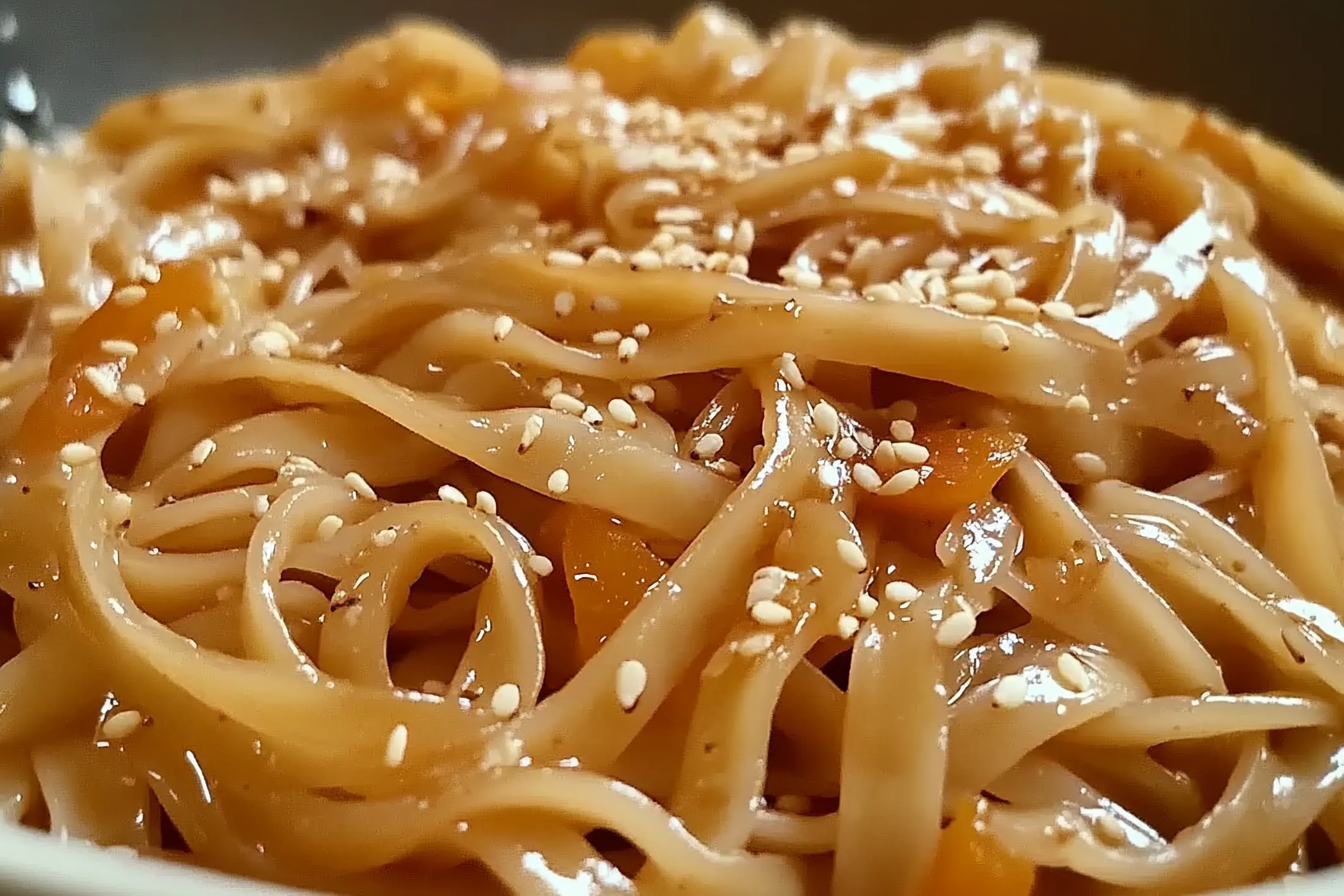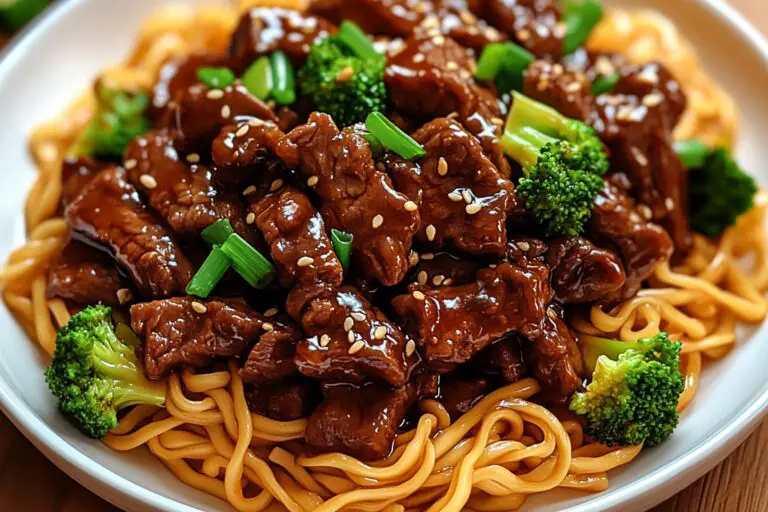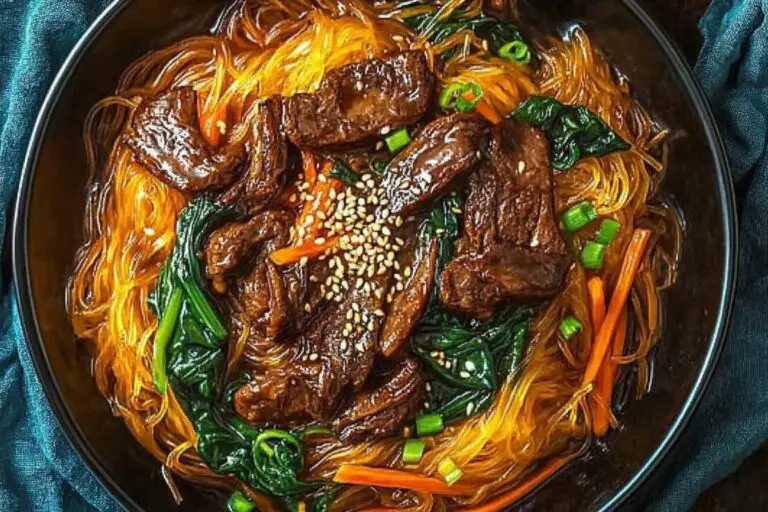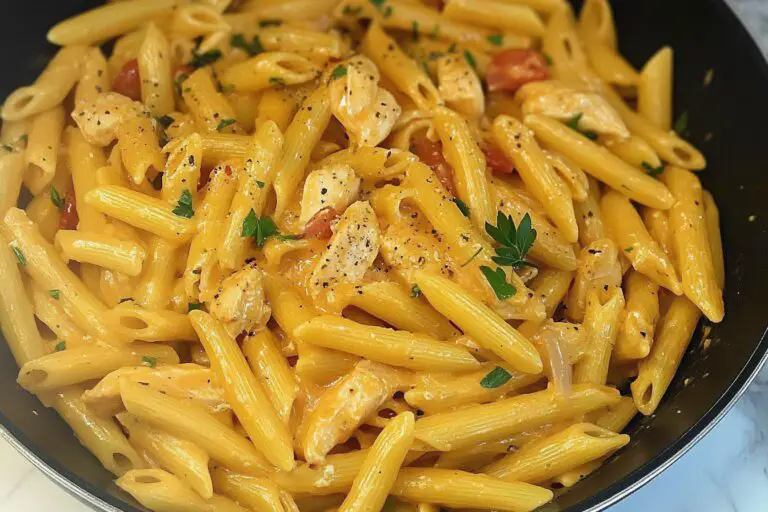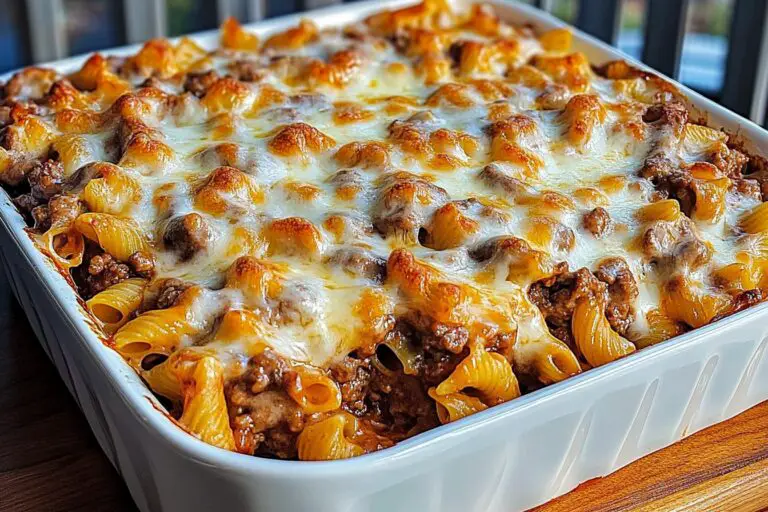Hibachi Noodles Recipe
Introduction
Hibachi noodles offer a delicious and satisfying meal that brings the flavors of Japanese teppanyaki cooking to your own kitchen. These stir-fried noodles are typically tossed with a variety of vegetables, proteins, and a savory sauce, making them a versatile dish that can be customized to your taste. Whether you’re looking for a quick weeknight dinner or a fun meal for a gathering, hibachi noodles are the perfect solution.
Detailed Ingredients with measures
Noodles: 8 ounces of yakisoba or soba noodles
Vegetable oil: 2 tablespoons
Garlic: 2 cloves, minced
Carrots: 1 cup, julienned
Bell pepper: 1 cup, sliced
Broccoli: 1 cup, cut into florets
Soy sauce: 1/4 cup
Oyster sauce: 2 tablespoons
Sesame oil: 1 tablespoon
Green onions: 1/4 cup, chopped
Sesame seeds: for garnish
Prep Time
15 minutes
Cook Time, Total Time, Yield
Cook Time: 10 minutes
Total Time: 25 minutes
Yield: Serves 4

Detailed Directions and Instructions
Step 1: Prepare the Noodles
Begin by boiling a pot of water. Once boiling, add the noodles and cook according to the package instructions. Drain the noodles and set them aside.
Step 2: Chop Vegetables
While the noodles are cooking, chop your choice of vegetables. Common options include bell peppers, carrots, and zucchini. Ensure they are cut into thin strips for even cooking.
Step 3: Heat the Pan
In a large skillet or wok, heat a tablespoon of oil over medium-high heat. Allow the oil to become hot enough that it shimmers but does not smoke.
Step 4: Stir-Fry Vegetables
Add the chopped vegetables to the skillet. Sauté them for about 3-5 minutes, stirring frequently, until they are tender but still vibrant in color.
Step 5: Add the Noodles
Once the vegetables are cooked, add the drained noodles to the skillet. Toss everything together to combine.
Step 6: Season the Dish
Pour in soy sauce, sesame oil, and any additional seasonings or sauces you prefer. Stir to evenly coat all ingredients in the sauce.
Step 7: Incorporate Proteins (Optional)
If desired, add pre-cooked proteins such as chicken, shrimp, or tofu at this stage. Stir them in until heated through.
Step 8: Final Toss and Serve
Give everything one final toss to ensure all ingredients are well mixed. Remove from heat and serve immediately, garnishing with green onions or sesame seeds if desired.
Notes
Note 1: Noodle Choice
You can use different types of noodles such as udon, soba, or even spaghetti, depending on your preference.
Note 2: Seasoning Variations
Feel free to experiment with different seasonings like garlic, ginger, or chili paste to customize the flavor.
Note 3: Protein Options
When adding proteins, ensure they are pre-cooked to avoid lengthening the cooking time.
Note 4: Storage
Leftover hibachi noodles can be stored in an airtight container in the refrigerator for up to three days. Reheat thoroughly before serving.

Cook techniques
Stir-Frying
Stir-frying is a quick cooking method that involves tossing ingredients in a hot pan or wok with a small amount of oil. It’s essential for achieving that characteristic undeniable ‘wok hei’ flavor in hibachi noodles.
Marinating
Marinating the noodles and vegetables allows for deeper flavor absorption. A mix of soy sauce, sesame oil, and garlic can enhance the dish’s overall taste.
Achieving High Heat
Using high heat is crucial for stir-frying. It ensures that the ingredients cook evenly and quickly while retaining their crispness and vibrant colors.
Using Fresh Ingredients
Using fresh vegetables and proteins enhances the taste and texture of the hibachi noodles. Fresh ingredients not only taste better but also add nutritional value.
Proper Knife Skills
Maintaining uniform cut sizes for vegetables ensures even cooking. Practice safe and precise cutting techniques for a beautifully presented dish.
Tossing
Proper tossing techniques are important for evenly distributing heat and ingredients. Use a spatula or a pair of tongs to effectively mix everything together.
FAQ
What type of noodles are best for hibachi?
Egg noodles or lo mein noodles are commonly used in hibachi dishes due to their texture and ability to absorb flavors.
Can I customize my hibachi noodles?
Absolutely! You can customize your hibachi noodles by adding your choice of proteins, vegetables, and sauces.
What proteins can I use in hibachi noodles?
Common proteins include chicken, shrimp, beef, or tofu, depending on your preference.
How do I make hibachi noodles gluten-free?
For gluten-free hibachi noodles, use rice noodles or gluten-free soy sauce alternatives.
Can I make hibachi noodles in advance?
Yes, you can prepare the ingredients in advance, but it’s best to cook hibachi noodles just before serving for the freshest taste.

Conclusion
The Hibachi Noodles recipe is a delightful and versatile dish that brings the essence of Japanese cuisine right to your home. With its perfect balance of flavors and textures, it’s sure to impress your family and friends. Whether served as a main dish or a side, these noodles can be customized to suit any palate, making them a fantastic addition to your culinary repertoire.
More recipes suggestions and combination
Vegetable Stir-Fry
Pair your Hibachi Noodles with a colorful vegetable stir-fry that includes bell peppers, broccoli, and snap peas for a nutritious and vibrant meal.
Teriyaki Chicken
Serve Hibachi Noodles alongside teriyaki chicken for a sweet and savory combination that enhances the flavor profile of the dish.
Grilled Shrimp
Complement your noodles with grilled shrimp, seasoned to perfection, for a seafood twist that adds a touch of elegance.
Beef Teriyaki
Enjoy your Hibachi Noodles with beef teriyaki, offering a hearty option that pairs well with the noodles’ lightness.
Tofu Stir-Fry
For a vegetarian option, sauté tofu with garlic and vegetables, creating a wholesome dish that complements the noodles beautifully.
Lemon Garlic Butter Sauce
Drizzle your Hibachi Noodles with a lemon garlic butter sauce for an added zing and richness that elevates the everyday meal.
Spicy Szechuan Chicken
Add a kick to your meal by serving the noodles with spicy Szechuan chicken, bringing bold flavors and heat to the dish.
Egg Fried Rice
For a heartier option, mix in egg fried rice for a satisfying mix that incorporates even more textures and flavors.

